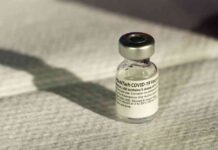A Canadian father’s quest to save his son from a rare, fatal disease has led to the development of a groundbreaking gene therapy that is now in high demand. Terry Pirovolakis, an IT director from Toronto, Ontario, found himself facing a devastating diagnosis when his infant son, Michael, was diagnosed with spastic paraplegia 50 (SPG50), a neurological disorder that affects fewer than 100 people in the world. Determined to find a treatment where none existed, Pirovolakis embarked on a journey that ultimately led to the creation of a miracle drug that has the potential to change the lives of children suffering from SPG50.
The Diagnosis and Determination
When Michael was born in December 2017, everything seemed normal. However, within six months, Pirovolakis and his wife, Georgia, began to notice that their baby was not meeting developmental milestones. After a grueling 18-month diagnostic process, Michael was diagnosed with SPG50, a condition that would leave him paralyzed from the waist down by age 10 and quadriplegic by age 20. Faced with the heartbreaking prognosis, Pirovolakis refused to accept that there was no hope for his son.
Understanding SPG50
SPG50 is a rare neurological disorder that affects a child’s development, leading to cognitive impairment, muscle weakness, speech impairment, and paralysis. With most patients succumbing to the disease by their 20s, the prognosis for those with SPG50 is grim. Managing the symptoms of SPG50 typically involves a combination of physical therapy, occupational therapy, speech therapy, and medications to control spasticity and seizures. However, there was no cure or approved treatment for the disease until Pirovolakis took matters into his own hands.
The Journey to a Miracle Drug
After receiving the devastating diagnosis, Pirovolakis dedicated himself to finding a solution for Michael. He embarked on a global quest to research gene therapy options and ultimately worked with a team at the University of Texas Southwestern Medical Center to create a proof of concept for a gene therapy that could halt the progression of SPG50. Following successful tests in mice and human cells, Pirovolakis collaborated with a drug company in Spain to manufacture the life-saving treatment.
A Beacon of Hope
On December 30, 2021, Health Canada approved the gene therapy for Michael, making him the first person to receive the groundbreaking treatment. The procedure, which involves injecting cerebral spinal fluid through a lumbar puncture, carries risks but offers the potential for life-changing benefits. Seeing the positive impact on his son, Pirovolakis made it his mission to help other children with SPG50 access the treatment.
Expanding Access to Treatment
Following Michael’s successful treatment, Pirovolakis opened a Phase 2 study in the U.S. that treated three children, including 6-month-old Jack Lockard. The results were promising, with children showing improvements in cognitive and physical milestones. However, funding constraints have limited access to the treatment for other children in need. Despite challenges in securing financial support, Pirovolakis remains determined to push forward with the clinical trial to ensure that every child with SPG50 has the opportunity to benefit from the gene therapy.
Challenges and Opportunities
The high cost of developing treatments for rare diseases like SPG50 presents a significant barrier to progress. Pharmaceutical companies often prioritize conditions that affect larger populations to recoup research and development costs, leaving rare diseases like SPG50 without viable treatment options. Pirovolakis’s nonprofit, Elpida Therapeutics, has partnered with organizations like the Columbus Children’s Foundation and CureSPG50 to advance research and provide hope to families affected by rare genetic disorders.
Looking to the Future
As Elpida Therapeutics prepares for a Phase 3 clinical trial at the NIH, Pirovolakis envisions a future where every child with SPG50 has access to the life-saving gene therapy. By demonstrating the efficacy of the treatment in a larger cohort of patients, Pirovolakis hopes to secure FDA approval and integrate SPG50 screening and treatment into standard medical practices. Despite funding challenges, Pirovolakis remains optimistic that with the support of philanthropic individuals and organizations, the vision of a cure for rare diseases like SPG50 can become a reality.
Final Thoughts
The story of Terry Pirovolakis and his relentless pursuit of a cure for SPG50 is a testament to the power of determination and hope in the face of adversity. Through his unwavering commitment to his son and other children affected by rare diseases, Pirovolakis has sparked a movement that has the potential to transform the landscape of genetic medicine. As the world watches the progress of Elpida Therapeutics and the upcoming Phase 3 trial, there is renewed optimism that children like Michael and Jack will have a chance at a brighter future.

















